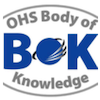Chapter 25: Non-Ionising Radiation – Electromagnetic
Abstract
Non-ionising radiation includes electromagnetic radiation spanning the spectrum from extra low frequency fields produced from power lines, through to very short wavelength ultraviolet radiation. Humans have evolved in an environment bathed in electromagnetic radiation, principally received from the sun and other natural events including lightning. However, in the last century, humans have developed focused sources of such radiation for communications and other industrial uses that, if not controlled, can cause adverse health effects. In relation to some electromagnetic radiation bands, the epidemiology of possible health effects is still evolving.
The measurement of electromagnetic radiation and the design and control of plant that produces this is, with some exceptions, a specialised field requiring the services of an expert. However the generalist OHS professional needs to understand the basic epidemiology, physics and control actions required to manage electromagnetic radiation and its risks. With industrial sources of radiation, this will generally mean involvement at the design stage to ensure relevant standards are met, and to ensure appropriate maintenance programs for such engineering controls. The OHS professional will also be required to develop administrative control programs, particularly relating to outdoor worker exposure, and selection and use of relevant personal protective equipment.
Keywords: non-ionising radiation, electromagnetic radiation, extra low frequency, radiofrequency, microwaves, infrared, visible light, ultraviolet, laser
First year of publication: 2012
Current Version: 2019
Chapter 25: Non-Ionising Radiation – Electromagnetic
Table of contents
| 1 | Introduction |
| 2 | Historical Context |
| 3 | Extent of the problem |
| 4 | Understanding non-ionising EMR |
| 4.1 | Units of measurement |
| 4.2 | The impact of non-ionising EMR on the body |
| 4.3 | Legislation |
| 5 | Extra Low Frequency Radiation |
| 5.1 | Definition and use |
| 5.2 | Health effects |
| 5.3 | Risk Management |
| 6 | Radio Frequency Radiation |
| 6.1 | Definition and use |
| 6.3 | Risk management |
| 7 | Infra Red Radiation |
| 7.1 | Definition and use |
| 7.2 | Health effects |
| 7.3 | Risk Management |
| 8 | Visible light |
| 8.1 | Definition and use |
| 8.2 | Health effects |
| 8.3 | Risk Management |
| 9 | Ultraviolet Radiation |
| 9.1 | Definition and use |
| 9.2 | Health effects |
| 9.3 | Risk Management |
| 10 | Lasers |
| 10.1 | Definition and usse |
| 10.2 | Health effects |
| 10.3 | Legislation |
| 10.4 | Risk Management |
| 11 | Implications for practice |
| 12 | Summary |
| 13 | Additional Sources of Information |
Purchase the AUDIO chapter here through AIHS
OR

Leo Ruschena MSc, MIER, BEng, BEcon, GradDip OrgBeh, CFSIA, ChOHSP
Senior Lecturer OHS, School of Applied Science, RMIT University
Leo’s postgraduate and undergraduate classes at RMIT University cover OHS management systems, risk assessment and controls, ergonomics and employee relations. Leo has held executive HR/OHS roles in WorkSafe Victoria and various Victorian and ACT electricity supply authorities.

Martin I. Ralph BSc(Hons), GC(OHRS), CRadP, MAIHS
Regional Inspector of Mines, at the Mine Safety Directorate of the (WA) Department of Mines, Industry Regulation and Safety (DMIRS).
Martin began his Occupational Safety and Health career in industrial hygiene, specialising in radiation protection. Currently Managing Director of IFAP, his past positions have included Western Australia Department of Minerals and Energy Special Inspector of Mines (Radiation and Ventilation). Martin is a member of the Society for Radiological Protection and the American Society of Safety Engineers, and a certified Radiation Protection Professional. He has extensive management, OHS and radiation protection experience, and a particular interest in the psychology of safety, environmental toxicology and public policy in relation to the mining and milling of radioactive ores.
Learning Outcomes: Non-Ionising Radiation – Electromagnetic
The OHS Body of Knowledge takes a conceptual approach which enables it to be applied in different contexts and frameworks. To optimise its value for education and professional development learning outcomes have been developed for each technical chapter in the Body of Knowledge.
The learning outcomes as described give an indication of what should be the capabilities of a new graduate OHS professional in the workplace. I t is up to those developing OHS education programs, OHS professionals planning their CPD or recruiters or employers selecting or developing people for the OHS function to consider the required breadth vs. depth
Podcasts
3M Science of Safety Podcast: Ep 85 Non-ionsing radiation
As opposed to ionising radiation, non-ionising radiation is a source of relatively low-energy radiation that does not have enough power to ionise atoms or molecules and unable to change the composition of a substance. Non-ionising radiation is found in a wide range of occupational environments, although considered less dangerous, overexposure can pose considerable health risks to potentially exposed workers if not suitably controlled.
Date: 2020
Presenter: Robert Blackley
Source: https://3mscienceofsafety.libsyn.com/episode-85-non-ionising-radiation
Published 2012 Chapter 25 Non ionising radiation

